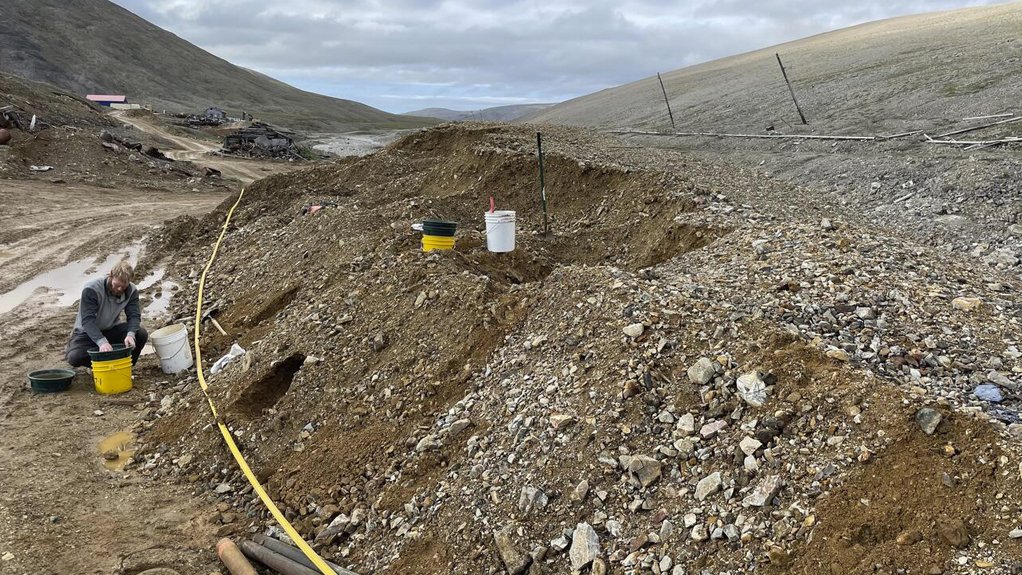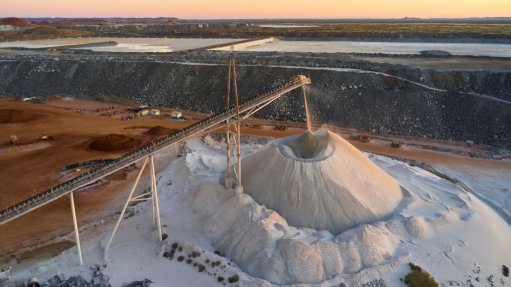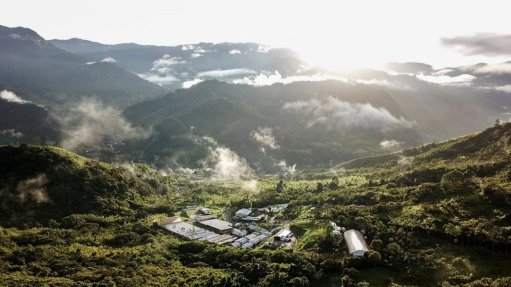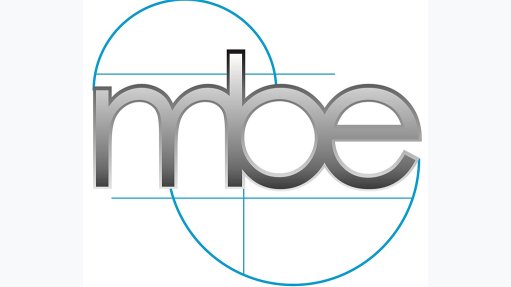Investigating tailings dumps for in-demand minerals


CRITICAL ANALYSIS A scientist sieves a sample of tin placer tailings in Cassiterite Creek on the western Seward Peninsula of Alaska
US State geology department the US Geological Survey (USGS) has invested more than $2-million into studying the potential to source critical mineral resources in mine waste such as mine tailings, as part of US President Joe Biden’s Bipartisan Infrastructure Law in cooperative agreements with 14 US states.
The funding will enable the USGS and the states of Arizona, Illinois, Kentucky, Michigan, Missouri, Montana, Nevada, New Mexico, New York, North Carolina, Oklahoma, Virginia and Washington to better map locations of mine waste and measure the potential for critical minerals that might exist there.
It will also enable the states to add data from their own mine waste inventories to the national US inventory.
Mining produces a lot of waste as a result of sifting through material found before getting to mineral-rich orebodies.
In addition to topsoil, waste rock and other materials that are removed to get to the ore – which is the rock that contains a potentially profitable concentration of a particular mineral commodity – the valuable minerals are generally a small percentage of the ore that is mined.
Concentrating the valuable minerals during initial processing of a mining operation leaves behind tailings, which are frequently discarded and stored at a mine site, while the valuable minerals are taken away for further processing.
In the past, mines in the US have focused on metals that are reliably profitable, such as gold, silver, iron, copper, lead and zinc.
However, many newer technologies such as renewable energy generation, electric vehicle batteries and consumer electronics, rely on small amounts of mineral commodities that are often rarer in the Earth’s crust and are frequently unprofitable to mine by themselves, the USGS notes.
In some cases, these rare mineral commodities occur alongside the traditionally profitable metals.
In this regard, the USGS points out that many historical mines extracted metals that were profitable during particular commodities’ boom years, but disregarded the rare mineral commodities such as cobalt and indium, as well as other critical minerals, as a result of these minerals not being in demand at that point in time. As a result, they were often discarded in tailings dumps.
Renewed Interest
With funding from the Bipartisan Infrastructure Law, the USGS and state geological surveys are taking a second look at US-based mine waste to better ascertain their critical mineral potential.
“These agreements are allowing us and the states to take a second look at places that were once known for their mineral production to see if there might yet be some new critical mineral potential, just waiting to be found,” says USGS Earth Mapping Resources Initiative (MRI) programme manager Darcy McPhee.
The Bipartisan Infrastructure Law provides a $510.7-million investment to the USGS to advance scientific innovation and map critical minerals, including through USGS’s Earth MRI – a partnership between the USGS and state geological surveys to modernise the US’s understanding of its fundamental geologic framework and improve knowledge of domestic critical mineral resources both in the ground and in mine waste.
Earth MRI is investing $74-million a year, of which $64-million comes from the Bipartisan Infrastructure Law.
The USGS has started by creating a national mine waste inventory that identifies where mine waste exists on the landscape.
Using the USMIN database, USGS scientists have plotted the location of historic mine features, including known tailing piles, along with which minerals were produced there.
Once the locations of mine waste dumps are known, research is needed to determine whether critical minerals can be found in the tailings and, if so, how they might be produced and what effects producing them might have on local ecosystems and communities.
Funding from these new cooperative agreements will enable states such as Illinois, Iowa, Missouri, Montana, New York, North Carolina and Washington to collect samples from tailing sites, create geologic maps and analyse the surrounding area to see what the potential for critical minerals might be.
Article Enquiry
Email Article
Save Article
Feedback
To advertise email advertising@creamermedia.co.za or click here
Press Office
Announcements
What's On
Subscribe to improve your user experience...
Option 1 (equivalent of R125 a month):
Receive a weekly copy of Creamer Media's Engineering News & Mining Weekly magazine
(print copy for those in South Africa and e-magazine for those outside of South Africa)
Receive daily email newsletters
Access to full search results
Access archive of magazine back copies
Access to Projects in Progress
Access to ONE Research Report of your choice in PDF format
Option 2 (equivalent of R375 a month):
All benefits from Option 1
PLUS
Access to Creamer Media's Research Channel Africa for ALL Research Reports, in PDF format, on various industrial and mining sectors
including Electricity; Water; Energy Transition; Hydrogen; Roads, Rail and Ports; Coal; Gold; Platinum; Battery Metals; etc.
Already a subscriber?
Forgotten your password?
Receive weekly copy of Creamer Media's Engineering News & Mining Weekly magazine (print copy for those in South Africa and e-magazine for those outside of South Africa)
➕
Recieve daily email newsletters
➕
Access to full search results
➕
Access archive of magazine back copies
➕
Access to Projects in Progress
➕
Access to ONE Research Report of your choice in PDF format
RESEARCH CHANNEL AFRICA
R4500 (equivalent of R375 a month)
SUBSCRIBEAll benefits from Option 1
➕
Access to Creamer Media's Research Channel Africa for ALL Research Reports on various industrial and mining sectors, in PDF format, including on:
Electricity
➕
Water
➕
Energy Transition
➕
Hydrogen
➕
Roads, Rail and Ports
➕
Coal
➕
Gold
➕
Platinum
➕
Battery Metals
➕
etc.
Receive all benefits from Option 1 or Option 2 delivered to numerous people at your company
➕
Multiple User names and Passwords for simultaneous log-ins
➕
Intranet integration access to all in your organisation



















